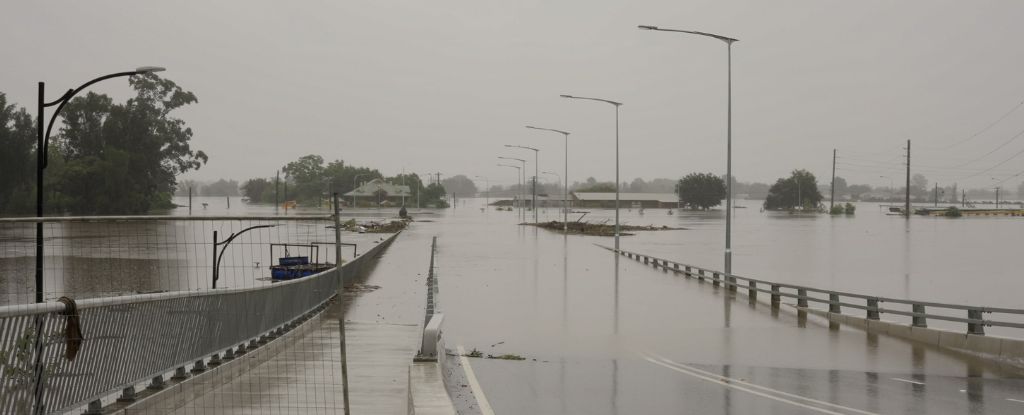Products You May Like
As the world braces for a third consecutive year of exceptional La Niña conditions, a new study reveals how our climate models might have missed this disastrous ‘triple-dip’ effect.
It’s the first time in a century that La Niña has stuck around for so long, and her wrath is being felt in southern Africa and South America in the form of drought, and in Australasia and South-East Asia in the form of floods.
Her conditions are also set to bring a cool, wet winter to the Pacific Northwest and a hot, dry one to the southwest of the United States.
La Niña is El Niño’s somewhat overlooked twin sister, at least when it comes to our climate models. The Pacific Ocean naturally oscillates between El Niño and La Niña conditions, occuring once every couple of years.
Under what are regarded as normal conditions, strong trade winds push the surface layer of the Pacific Ocean west, dragging a layer of warm water like a finger dragging a page in a book. Deeper, cooler water rises to replace it near the Central American coast, establishing temperature and moisture conditions for local weather patterns.
El Niño occurs when the trade winds weaken, leaving the cool waters in the Pacific’s east trapped beneath a warm surface. The result is less rain over places like Australia, and more precipitation in the US Southeast. La Niña occurs when the trade winds strengthen, exposing more of that cool water. As a result, the jet stream high above gets nudged north, pushing rains that would normally fall on the southern US much further north.
With global warming generally increasing sea surface temperatures, both El Niño and La Niña are expected to become more frequent and severe, with extreme events occuring once a decade instead of once every twenty years.
So why is La Niña running the show right now? While climate models accurately paint the big picture on future trends, predicting the precise swing of the pendulum is taking some work.
“The climate models are still getting reasonable answers for the average warming,” says atmospheric scientist Robert Wills from the University of Washington, “but there’s something about the regional variation, the spatial pattern of warming in the tropical oceans, that is off.”
Looking back at El Niños and La Niñas since 1979, researchers found a discrepancy between real-world observations and 16 current climate models.
These models were unable to reproduce reality in both equatorial and midlatitude oceans. Only one even got remotely close.
As the climate crisis steps up, sea surface temperatures appear to be on a general incline. Still, in the east Pacific and southern oceans, there is more cooling happening than expected.
“While biased trends have been previously identified in the equatorial Pacific, our work shows that biased trends are a much more widespread problem in climate models,” the authors write.
Even though climate models can reproduce observed sea surface temperature trends quite reliably in the short term, something is clearly missing from the long-term picture.
Some studies suggest a ten-year swing in Pacific conditions can explain the discrepancy. But even when that swing took place two years ago, there were still observed anomalies in the South Pacific.
Perhaps there is an overlooked natural variable in the southern ocean that spans multiple decades.
Or perhaps it’s climate change.
UW researchers say their findings have led them “to conclude that it is extremely unlikely that this pattern of trend discrepancies results entirely from internal variability.”
There are several reasons why cooling in the Southern Ocean could be due to escalating atmospheric temperatures forced by human emissions.
Sea ice melt is one option; another is a shift in surface winds due to greenhouse gases and changes to the ozone layer.
But these changes will likely only be temporary. In the long run, the east Pacific and Southern Oceans will eventually warm, researchers at UW argue. And when they do, they could be even more vulnerable to the effects of climate change than other regions.
“A future shift toward a warming pattern with more warming in the eastern equatorial Pacific would also lead to major changes in the Walker circulation and the associated large-scale circulation and precipitation patterns,” the authors write.
Unless climate scientists can figure out why sea surface warming is so delayed in the east Pacific and Southern Ocean, the team says we will be left “with a huge source of uncertainty in multi-decadal projections of regional and global climate.”
For now, scientists don’t know when La Niña will lose the upper hand. Climate change could continue to favor her for years to come.
The study was published in Geophysical Research Letters.
